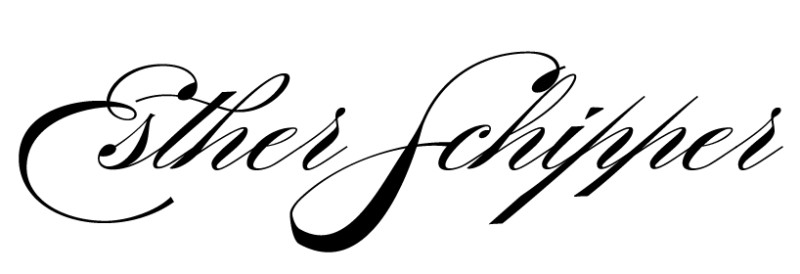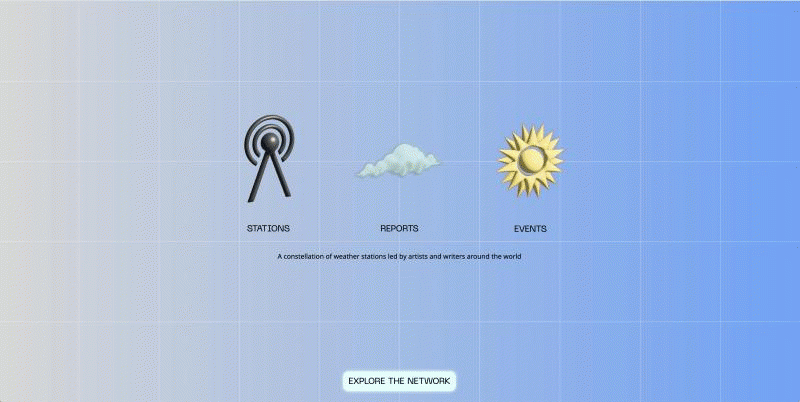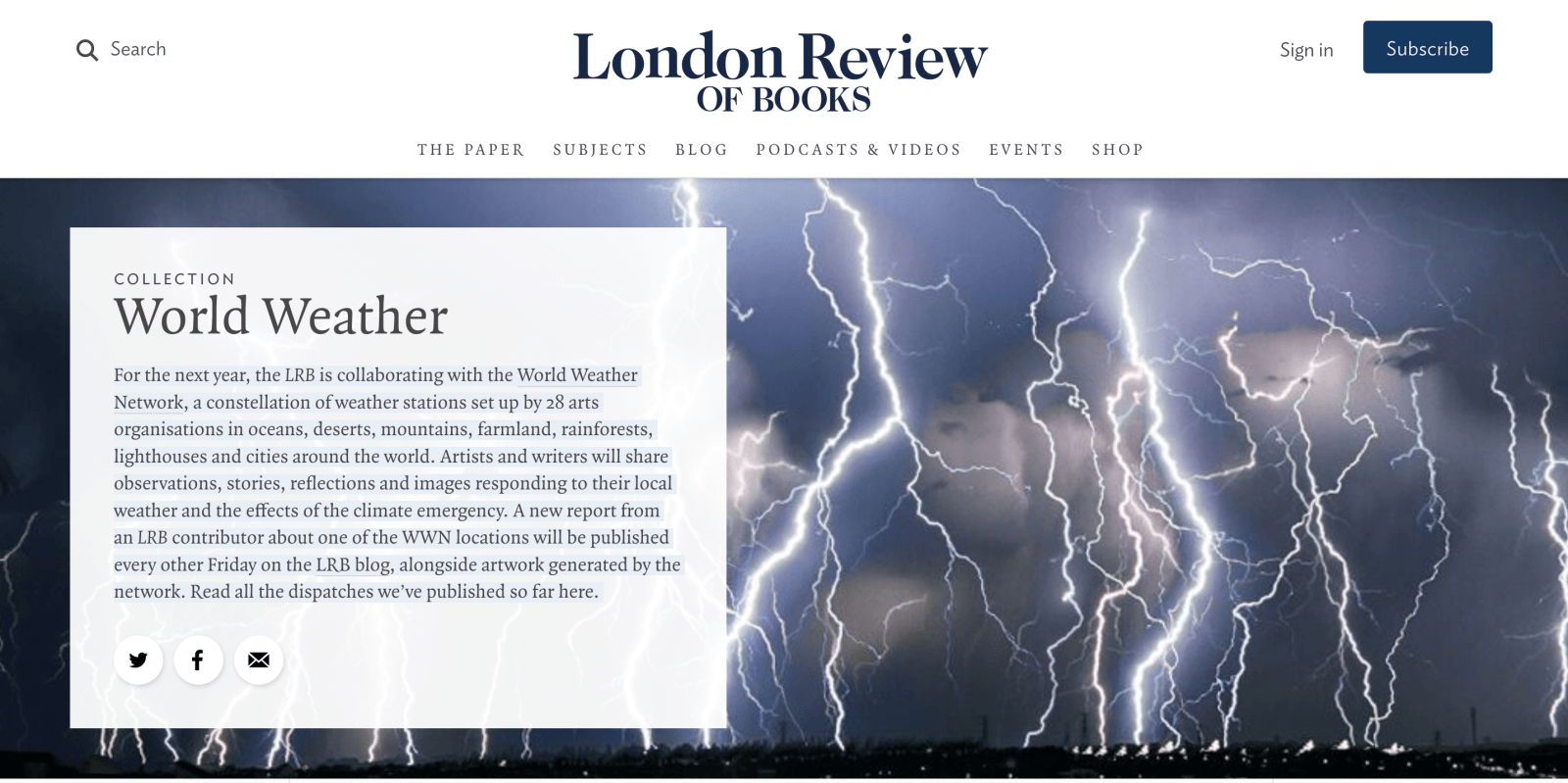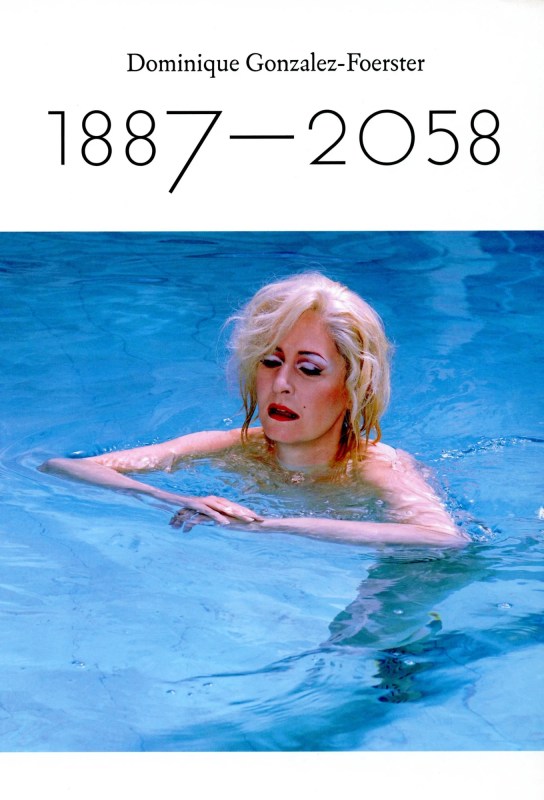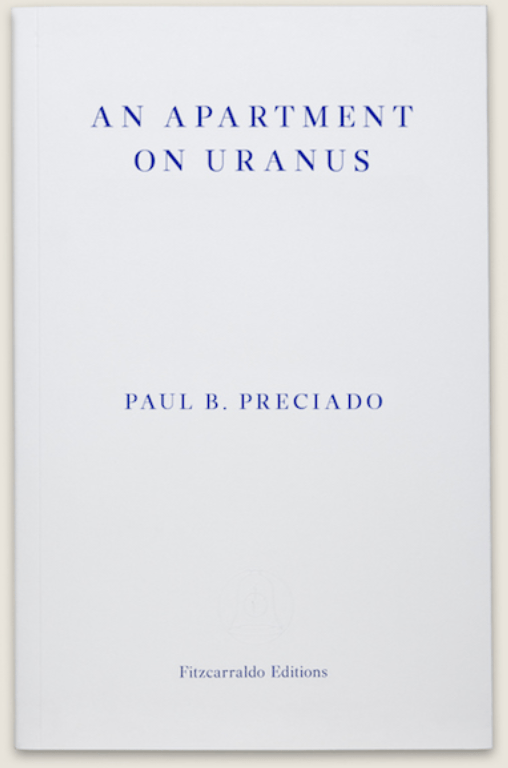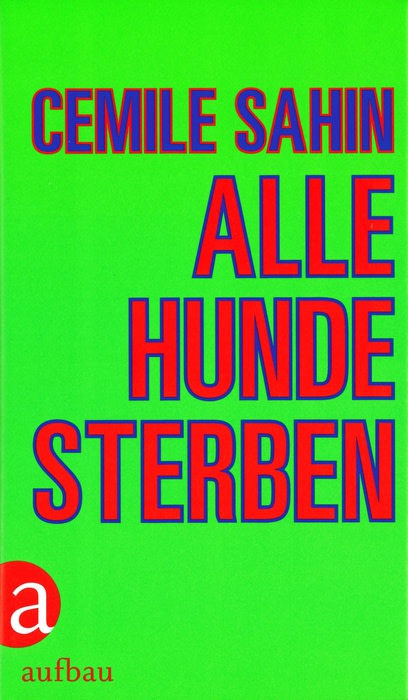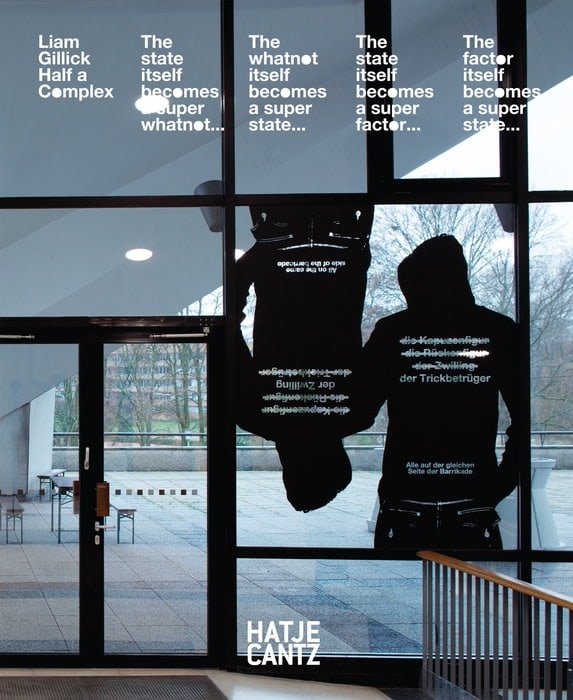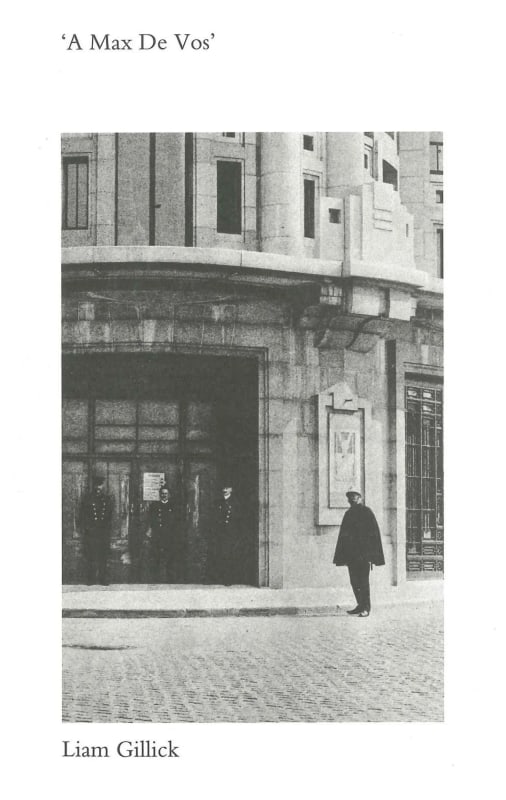Willkommen: Hier finden Sie die deutsche Fassung des Briefes aus BerlinWelcome to the Letter from Berlin! We begin with a look at Dominique Gonzalez-Foerster’s exhibition at the gallery and the project Une Valise Transféministe that Paul B. Preciado and she have installed in the bookstore. Through Sunday a presentation of two Ann Lee works by Tino Sehgal and Philippe Parreno remains on view at our location in Seoul. Art Cologne continues through Sunday as well: join us at our booth or explore the works online. Two video installations by Cemile Sahin are currently on view, at Kunsthalle Osnabrück and at the Lyon Biennale. Last month we already featured Liam Gillick’s project on Fogo Island, this month we introduce the World Weather Network and show you how to access the station’s data. Finally, Christopher Roth and Jeanne Tremsal’s feature film Servus Papa, See You in Hell will have its German theatrical release starting on November 24 and is already being featured at several festivals. Watch the trailer and find out about screening dates below. We hope you enjoy our Letter from Berlin! |
|
|
Dominique Gonzalez-Foerster
|
|

| Exhibition view: Dominique Gonzalez-Foerster, Panoramism and the Abstract Sector, Esther Schipper, Berlin, 2022. © Dominique Gonzalez-Foerster / VG Bild-Kunst, Bonn 2022. Photo © Andrea Rossetti
| |
|
Panoramism
The first building housing a panorama opened in London’s Leicester Square in 1793. By the mid 19th century, the large immersive environments, typically depicting historical events such as battles or travels to exotic locations, were immensely popular across Europe and North America. Early on embedded in architectural environments to heighten the illusion, moving dioramas were displayed in theater-like settings, sometimes narrated by a lecturer or performer.
Photography and later cinema took over quickly as story-telling devices. It wasn’t just movement that supplanted the panoramas but also reproduction. Skipping about 150 years of media history into the present, we find ourselves in a glut of images called the attention economy. An image must hit the mark fast but not too hard. It must be interesting enough to arrest you but not too absorbing to make you stop looking at the next.
|
|
|
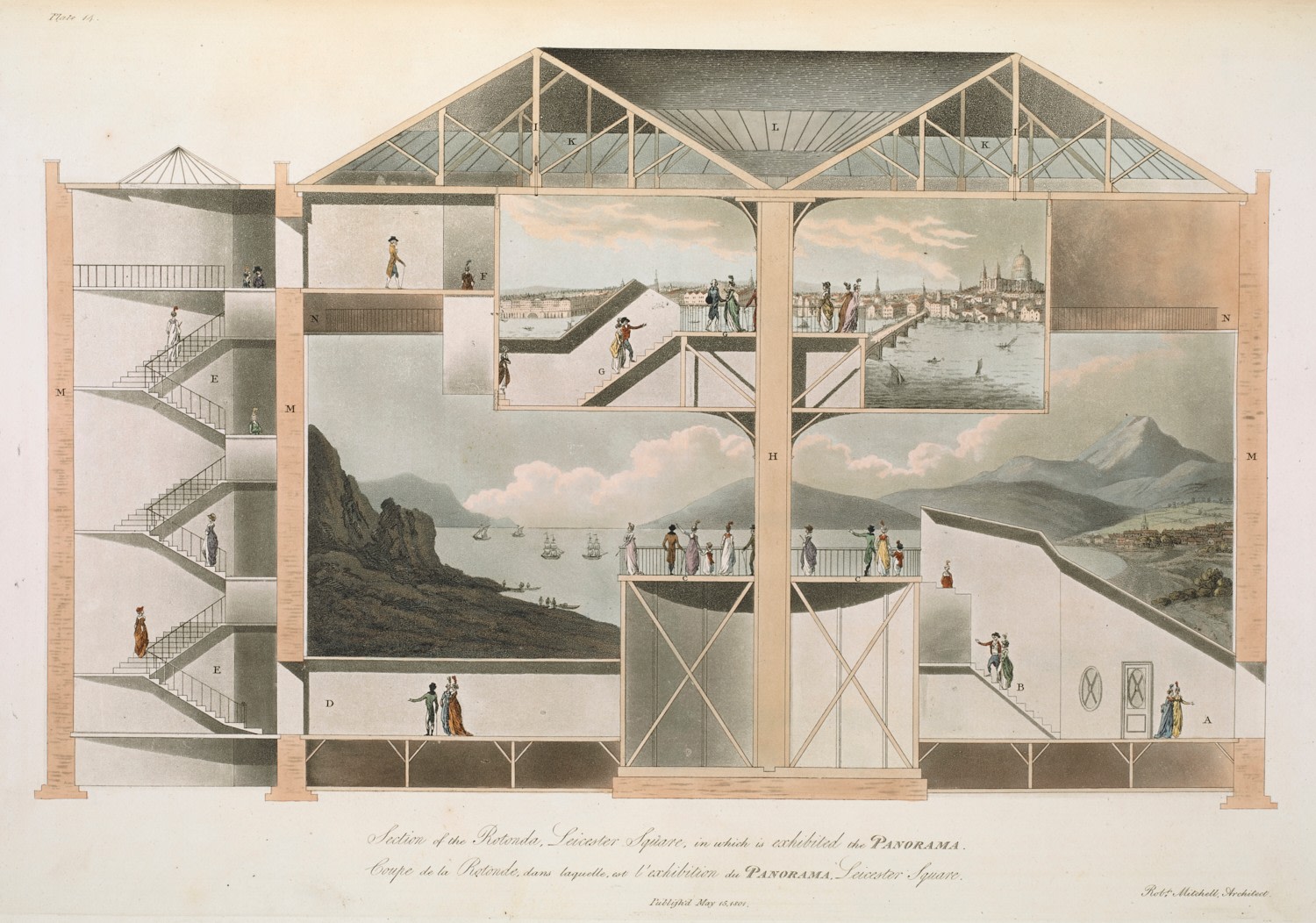
| Cross-section of the Panorama building in Leicester Square, London, designed by Robert Mitchell to exhibit the panoramic paintings of Robert Barker (1737-1806). Illustration published 1801. Public domain. | |
|
Dominique Gonzalez-Foerster (DGF) has said that the last two years have changed her notion of space and she has begun to think of it as collective. As a format the panorama and its techniques are an expression of this. It joins multiple mediums’ quintessential elements: From collage it fuses into a coherent whole hundreds of fragments holding their separate identities intact. From painting it takes the medium’s association with duration, both in the production and reception of painterly works. And, finally, as a panorama it is a real-life object drawing spectators in.
Looking at DGF’s panorama slows you down, it takes time. Reading across its 30-meter expanse, moving from panel to panel, the discovery of the fragments from artworks and photographs unfolds over time. From within the whole, the elements shine with optimism and creative elan. Spending time in the panorama gives a sense of pleasurable engagement, comparable to an interesting conversation. It has the feeling of a “real” encounter: seeing, and paradoxically, being seen, acknowledged somehow as part of this landscape.
—Isabelle Moffat
|
|
|
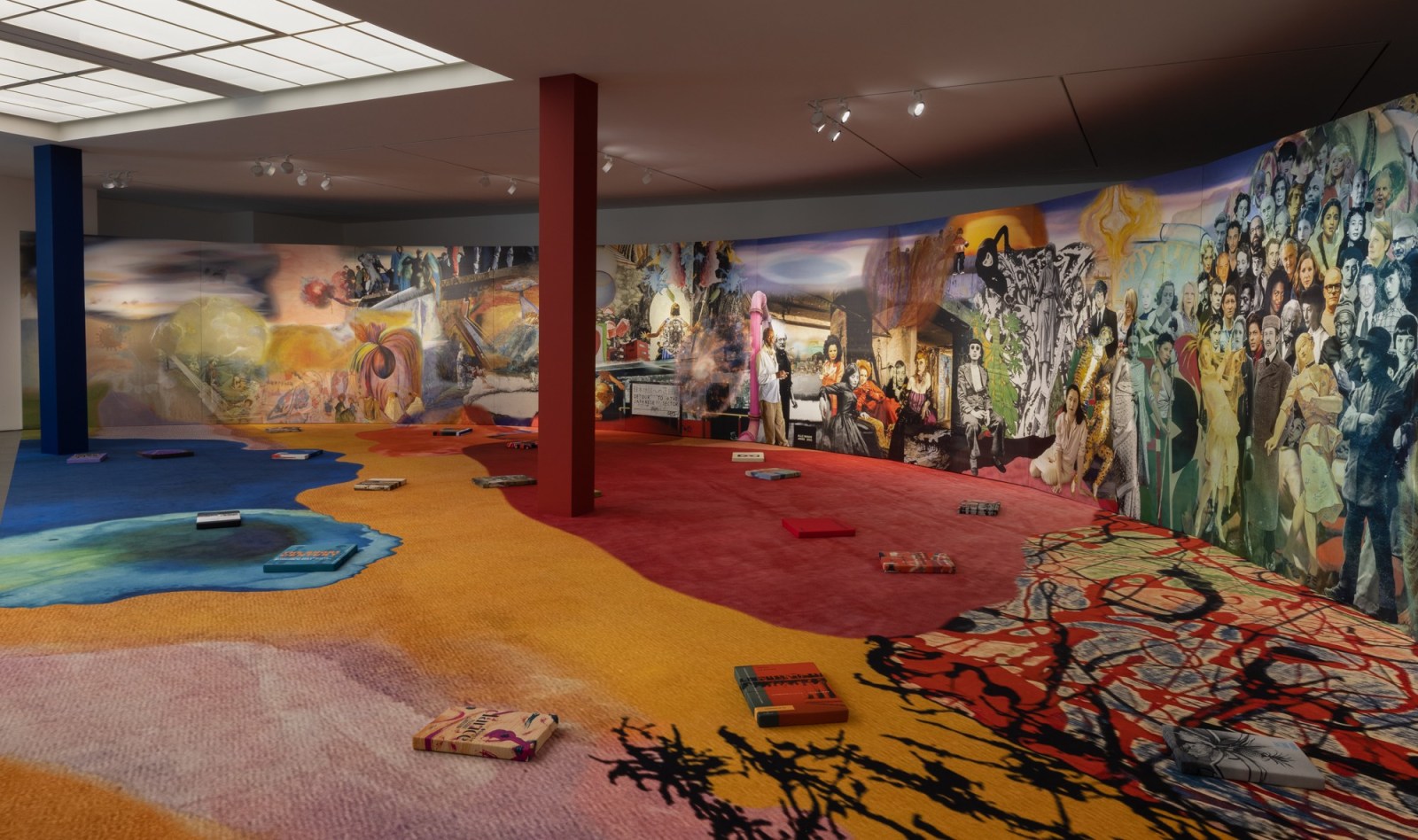
| Exhibition view: Dominique Gonzalez-Foerster, Panoramism and the Abstract Sector, Esther Schipper, Berlin, 2022. © Dominique Gonzalez-Foerster / VG Bild-Kunst, Bonn 2022. Photo © Andrea Rossetti | |
|
Panoramism and the Abstract Sector continues the artist’s creation of an artistic, emotional and intellectual genealogy, begun at the Vienna Secession in 2021 and at the Serpentine Galleries this past summer. Her panoramas constitute a new development in Dominique Gonzalez-Foerster's exploration into the narrative power of exhibitions, drawing on the prehistory of cinema. In an interview with curator Lynne Cooke, the artist described her fascination this way, “As you know, I am quite into exploring late nineteenth-century categories of precinematic display, such as the panorama, and thinking about where exhibition-making might have gone if cinema hadn't taken over the function of narrative. What might have happened if the panorama or some other form, like the diorama, which is another branch of that same tree, had assumed the task?” With this new body of works, Gonzalez-Foerster reimagines the panorama as a medium that transcends contemporary image culture and reconnects to the legacy of early 19th-century formats, restoring their visual splendor and excavating their discursive power as storytelling devices. |
|
|

| Dominique Gonzalez-Foerster, Panoramism and the Abstract Sector III, 2022, UV pigment print on hand-primed linen. Photo © Andrea Rossetti.
This panel features a section of the Berlin Wall with works by Edvard Munch, Barbara Honywood, and John LaFarge superimposed. Among the crowds, from imagery shot during the so-called fall of the wall in November 1989, is the dancer Harald Kreutzberg and the French actress Jeanne Roques from the 1915 silent film Les Vampires.
| |
|
Panoramism and the Abstract Sector is a 30-meter-long semicircular panorama. It consists of 12 panels that are combined into a seamless curved 180° degree expanse. UV-printed on hand-primed linen, each panel is a collage of abstract and figurative motifs, of depictions of real-life and fictional characters, set along representations of the Berlin Wall. The imagery extends from the panels onto a custom-printed carpet covering its semicircular interior.
|
|
|

| Exhibition view: Dominique Gonzalez-Foerster, Panoramism and the Abstract Sector, Esther Schipper, Berlin, 2022. © Dominique Gonzalez-Foerster / VG Bild-Kunst, Bonn 2022. Photo © Andrea Rossetti | |
|
Especially conceived for her exhibition at Esther Schipper, Berlin, Panoramism and the Abstract Sector draws on the history of Berlin in the 20th century. A central motif is the Berlin Wall: Covered in lyrical abstractions in one section, abstract expressionist in others, depicted in paintings or blanketed with graffiti, the wall forms the backdrop for a myriad of figures and locations. We see artists mingling with actors (in character and as themselves), dancers, fashion designers, musicians, philosophers, theorists, and writers—their depictions quoting from photographs, paintings and drawings. Along a temporal arc—from scenes of crowds atop the wall in November 1989 to later images of toppled sections of graffitied concrete—other sites, mostly in Berlin, and protagonists from earlier moments, especially the Weimar years with its lively, transgressive, and genderbending art and theater scenes, are interlaced.
|
|
|
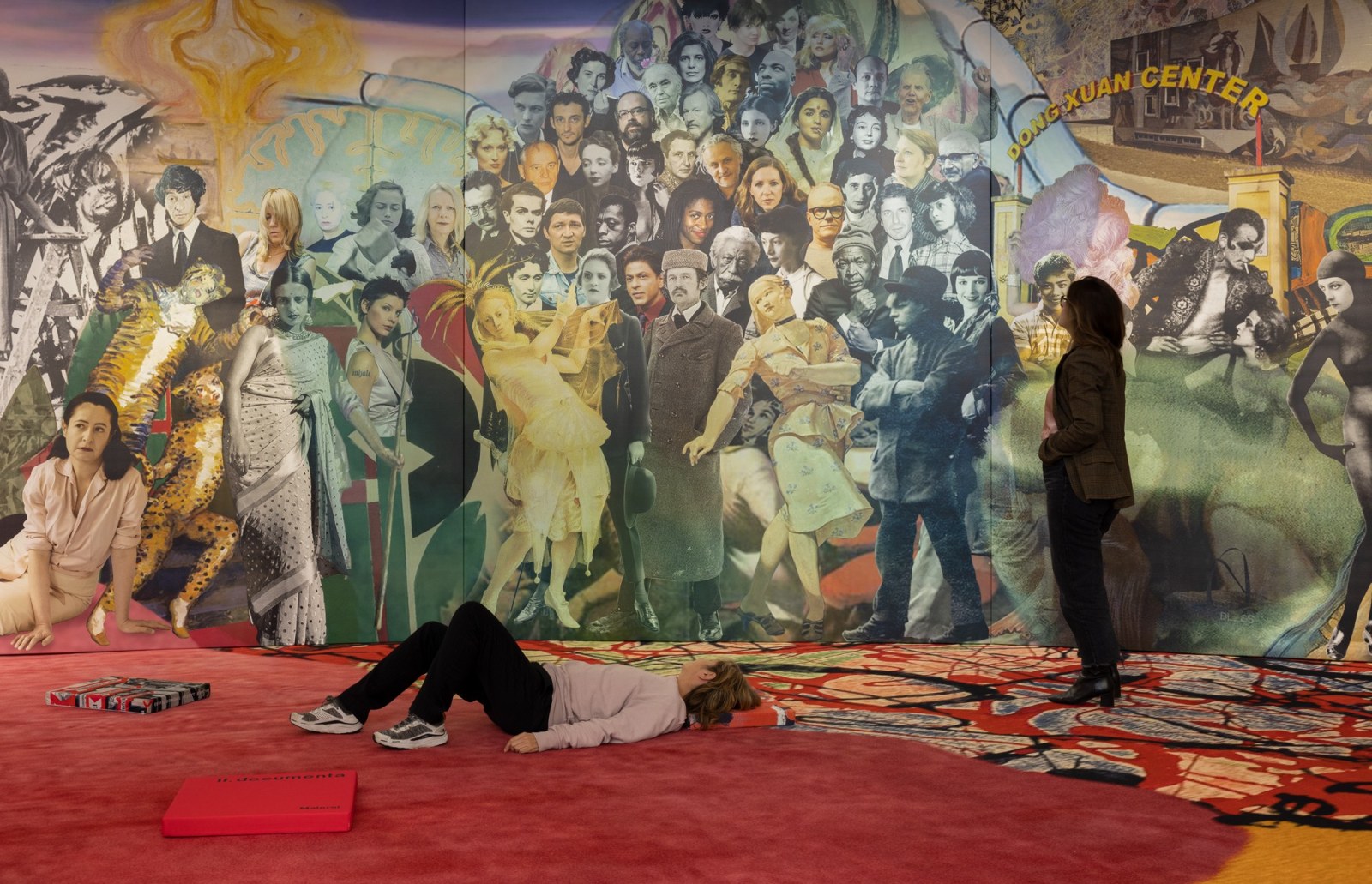
| Exhibition view: Dominique Gonzalez-Foerster, Panoramism and the Abstract Sector, Esther Schipper, Berlin, 2022. © Dominique Gonzalez-Foerster / VG Bild-Kunst, Bonn 2022. Photo © Andrea Rossetti | |
|
Another emphasis, signaled in the title, is abstraction, in particular abstract painting. Thus, Panoramism and the Abstract Sector includes a wide range of references to 20th-century abstraction, especially Color Field Painting and Abstract Expressionism, paying tribute to artists such as Helen Frankenthaler and Lee Krasner. This iconography is most visible on the first two panels (the numbering begins from left to right) which feature details from paintings by Helen Frankenthaler and Hedda Sterne, as well as a photograph of brightly lit cloud formations. But elements from abstract paintings and drawings permeate all panels: be it from 19th-century watercolors of plants, ink drawings by Victor Hugo and the detail from a painting by Agnes Pelton, a Rorschach inkblot, cloud formations, paintings by Lee Krasner, Edvard Munch, Ulla Wiggen, Janet Sobel and Ivan Kliun. Yet, figurative works are equally present in most panels, and the blurring of these art historical categories, that is, the distinction between abstraction and representation, is one of the topics of this work. |
|
|
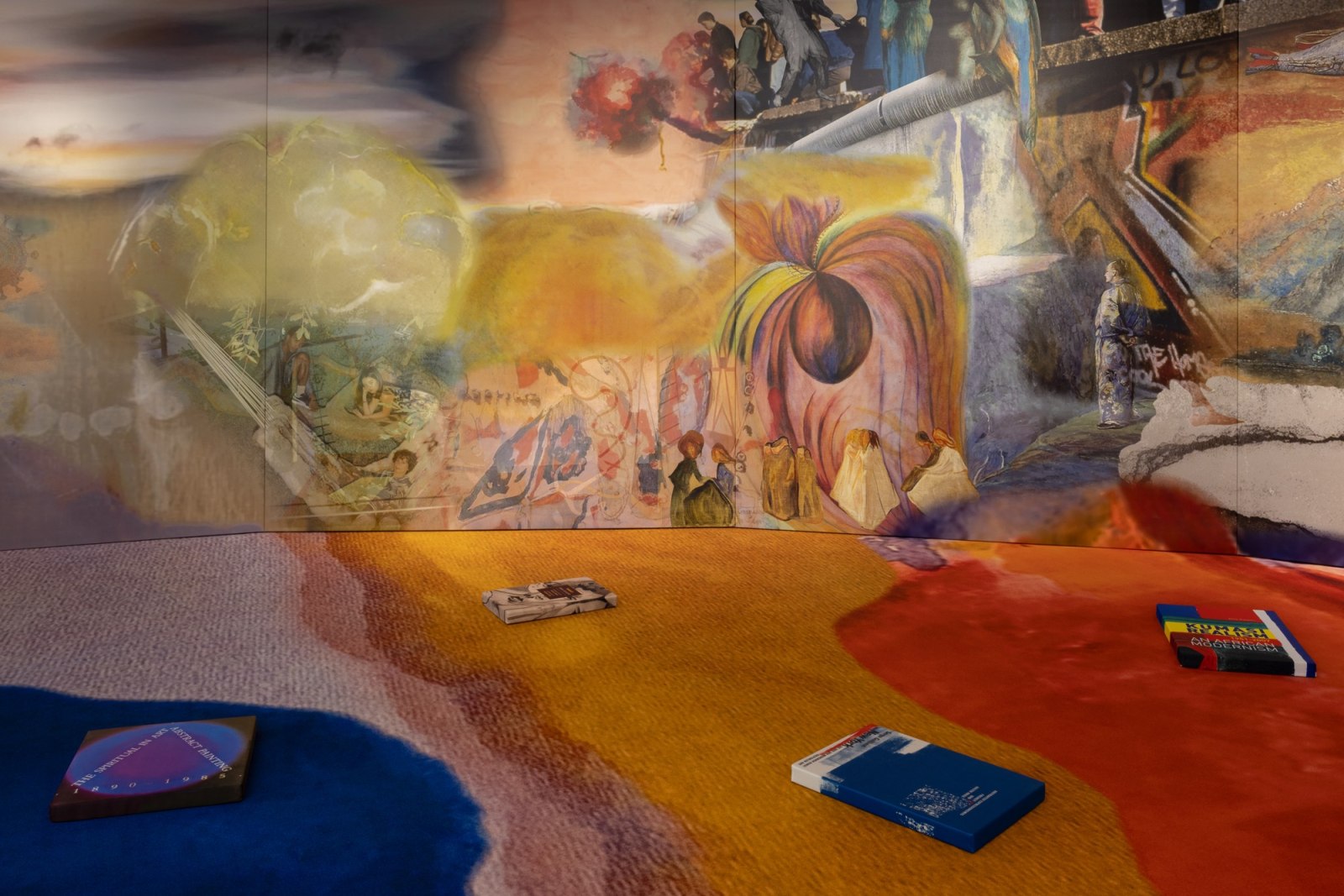
| Exhibition view: Dominique Gonzalez-Foerster, Panoramism and the Abstract Sector, Esther Schipper, Berlin, 2022. © Dominique Gonzalez-Foerster / VG Bild-Kunst, Bonn 2022. Photo © Andrea Rossetti | |
|
The artist described her first panorama, conceived for her solo exhibition at Vienna’s Secession in 2021, as a vision: “a huge transfeminist and antiracist excursion… an eruption of life, protest, activism, desire, in a period of control, fear, isolation and screen time….” This atmosphere of optimism and joyful celebration also permeates Panoramism and the Abstract Sector. One senses that the artist's connection to the figures is deeply felt. The people and works that appear in these larger-than-life panels represent artistic and cultural achievements, ideas, activism, important role models and inspirations, companions and friends. |
|
|

| Watch our exhibition film hereVideo: art/beats
| |
|
Paul B. Preciado and Dominique Gonzalez-Foerster |
|

| Exhibition view: Paul B. Preciado and Dominique Gonzalez-Foerster, Une Valise Transféministe, Esther Schipper, Berlin, 2022. © Dominique Gonzalez-Foerster / VG Bild-Kunst, Bonn 2022. Photo © Andrea Rossetti
| |
|
Currently on view in our bookstore, Une Valise Transféministe is an ensemble composed of different suitcases, books and a film.
The film brings the books to the screen. Between a portable library and transition kit, Une Valise Transféministe gathers photographic excerpts of feminist, lesbian, queer, anarcho-libertarian, and trans texts. A visual representation of shared reading, the film poses (and seeks to give one possible answer to) the question of how text and books can be exhibited. From the underlined sentences, highlighted passages and footnotes of references marked for further study, a portrait of a reader—or several readers—emerges, as well as a powerful legacy of feminist and transfeminist thought.
All the texts depicted in the film recur as physical books in the three suitcases summarily entitled Une Valise Transféministe. The three used suitcases are filled with sets of books from different eras—one with books published before 1900, another with works dating to 1900-2000, and a third with publications since 2000—and come to represent epochs of feminist and transfeminist thought. Among the books are novels, memoirs, historical and political treatises, philosophical tracts, manifestos and theoretical essay, classic and foundational feminist and transfeminist texts, on topics that include, among others, class and race relations, colonialism, suffrage, the rights of women, human and nonhuman animals, gender and sexuality, and love.
|
|
|
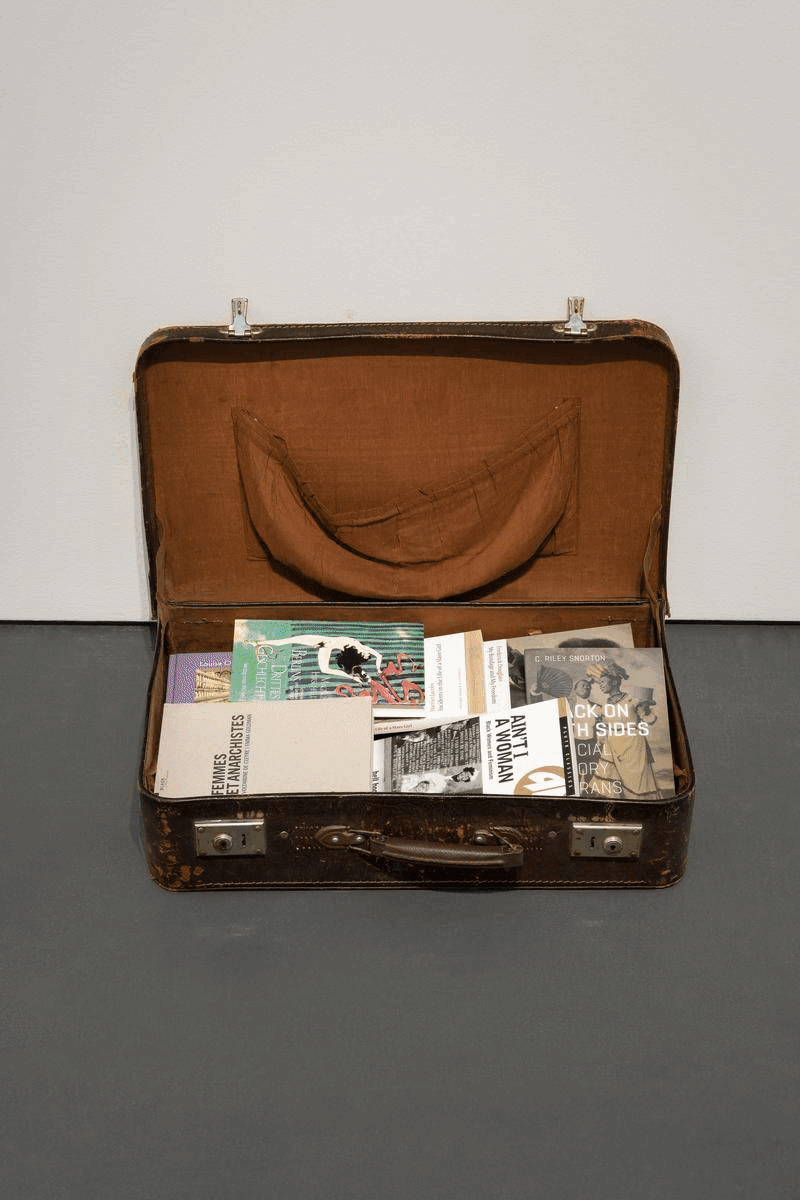
| Exhibition views: Paul B. Preciado and Dominique Gonzalez-Foerster, Une Valise Transféministe, Esther Schipper, Berlin, 2022. © Dominique Gonzalez-Foerster / VG Bild-Kunst, Bonn 2022. Photos © Andrea Rossetti
| |
|
Feminism, it has been claimed, begins again every generation: a fragmentation that can undermine the achievements of previous generations. Une Valise Transféministe, then, is also a gesture of recuperation, against this forgetting, stipulating a long trajectory of feminist and transfeminist thought and activism. In addition to histories of thought and activism, the book-filled suitcases also evoke transitional spaces, both literally—travel—and metaphorically—the state of becoming. It also recalls DGF’s series of works entitled tapis de lecture, composed of carpets and piles of books forming the bibliographies of the work itself.
Among previous collaborations between Paul B. Preciado and DGF are, for example, songs written by Preciado for Exotourisme—DGF’s musical collaboration with Julien Perez—and the development of the sculptural work, In remembrance of the coming alien (Alienor), presented in the park outside the Serpentine Galleries on occasion of DGF’s 2022 solo exhibition at the institution. |
|
|

| Paul B. Preciado and Dominique Gonzalez-Foerster, Une Valise Transféministe, 2019, 3 suitcases with books, video, duration: 1:34:51 min. © Dominique Gonzalez-Foerster / VG Bild-Kunst, Bonn 2022. Still © Paul B. Preciado and Dominique Gonzalez-Foerster
| |
|
Tino Sehgal and Philippe Parreno |
|

| Philippe Parreno, Anywhere Out Of The World, 2000, DVD projected via projector, loudspeaker, light.
Exhibition view: Ob/Scene Festival, Esther Schipper, Seoul, 2022. Photo © Hyun Jun Lee
| |
|
Ob/Scene Festival with Tino Sehgal and Philippe Parreno
Through November 20, 2022 Esther Schipper, Seoul 6, Noksapyeong-daero 46ga-gil Yongsan-gu, Seoul 04345 www.estherschipper.com Through Sunday, November 20, two works are presented at our Seoul location: Tino Sehgal’s Ann Lee, 2011, and Philippe Parreno’s Anywhere Out Of The World, 2000. The presentation is part of Ob/Scene Festival. In 1999, Philippe Parreno and Pierre Huyghe acquired the copyright for a Japanese manga character and her original image from the Japanese agency KWorks. They named her Ann Lee. Originally conceived by the agency to license the character to appear in minor roles in comics, ads or videogames, Ann Lee was “freed” of all industrial copyright. Parreno and Huyghe proposed to sixteen artists including Liam Gillick, Rirkrit Tiravanija, Dominique Gonzalez-Foerster and Richard Phillips, as well as to French actress Catherine Deneuve—who were invited to use the character for their own stories, yielding a series of videos, objects, and prints. In Parreno’s video Anywhere Out of the World, 2000, Ann Lee appears as a 3D character conceived with a motion capture animation. The film consists of a single animated sequence where Ann Lee presents herself and her story: “My name is Ann Lee! Ann Lee! You can spell it however you want! It doesn’t matter, no, it does not. […] I am an imaginary character. I am no ghost, just a shell.” In 2011, Tino Sehgal—a regular collaborator of both Huyghe and Parreno—paid tribute to the artists’ project by bringing Ann Lee back to life as a little girl in one of his “constructed situations”: Ann Lee, 2011. The works can be experienced at Esther Schipper Seoul through November 20, 12–6pm. |
|
|
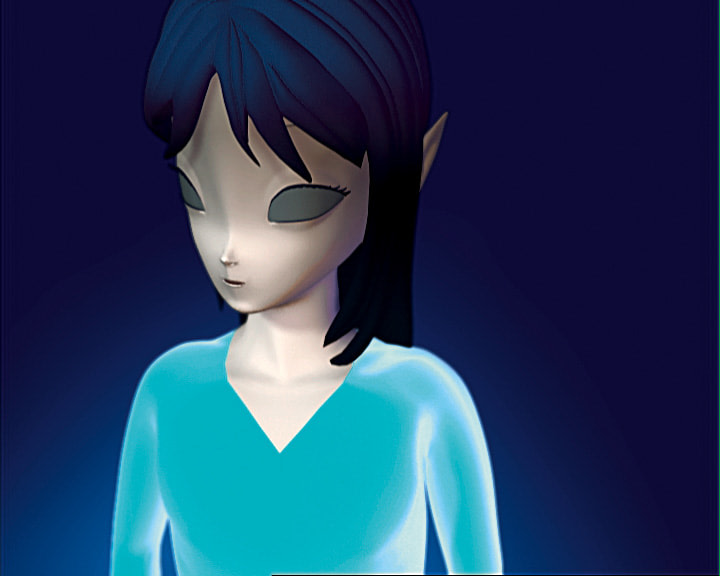
| Philippe Parreno, Anywhere Out Of The World, 2000 (still), DVD projected via projector, loudspeaker, light. © Philippe Parreno
| |
|
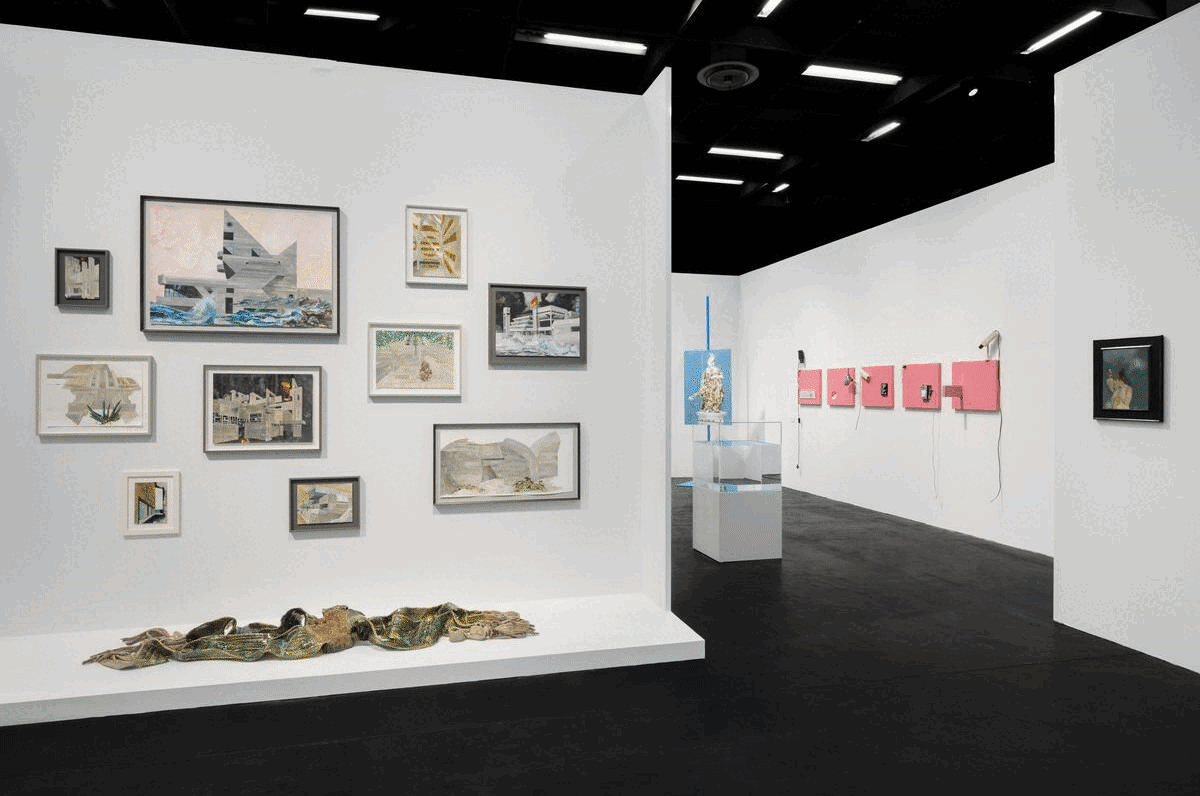 | Booth views: Esther Schipper, Art Cologne 2022. Photos © Andrea Rossetti | |
|
Art Cologne Hall 11.2, Booth A-104Koelnmesse Messeplatz 1 50679 Cologne Through November 20, 2022 www.estherschipper.comJoin us through this Sunday at our booth at Art Cologne where we present works by Rosa Barba, Sarah Buckner, Angela Bulloch, Ceal Floyer, Dominique Gonzalez-Foerster, Ann Veronica Janssens, Jac Leirner, Isa Melsheimer, Sojourner Truth Parsons, Cemile Sahin, Karin Sander, Julia Scher and Hito Steyerl. Click here to explore works in our boothIf you wish to receive a dossier, or should you have any questions about our presentation at Art Cologne, please contact Laura Kuthan kuthan@estherschipper.com. |
|
|
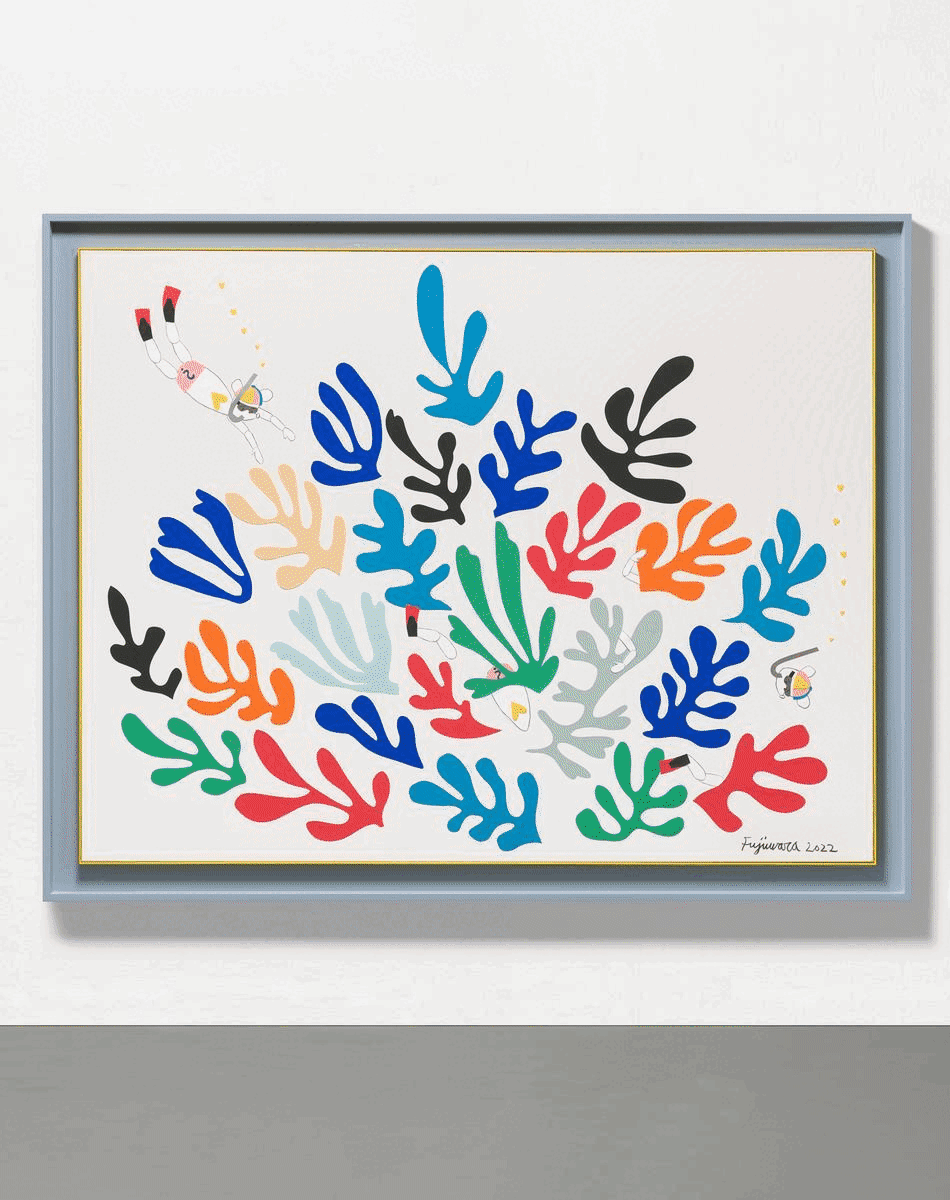
| Photos © Jörg von Bruchhausen; © Andrea Rossetti | |
|
Art Basel Miami BeachBooth H17 Miami Beach Convention Center 1901 Convention Center Drive Miami Beach, FL 33139 November 29 – December 3, 2022 www.artbasel.com
Esther Schipper is pleased to participate in Art Basel Miami Beach 2022, taking place from November 29 – December 3. We hope you will join us at the fair, Booth H17. With works by Rosa Barba, Stefan Bertalan, Martin Boyce, Matti Braun, Nathan Carter, Jacques Douchez, Simon Fujiwara, General Idea, Liam Gillick, Dominique Gonzalez-Foerster, Ann Veronica Janssens, Norberto Nicola, Roman Ondak, Philippe Parreno, Sojourner Truth Parsons and Julia Scher. This year we will be participating in the Art Basel Miami Beach's Kabinett section with a special presentation of works by Angela Bulloch. Click here to explore works in our boothIf you wish to receive a preview dossier, or should you have any questions about our presentation at Art Basel Miami Beach, please contact Marek Obara obara@estherschipper.com.
|
|
|
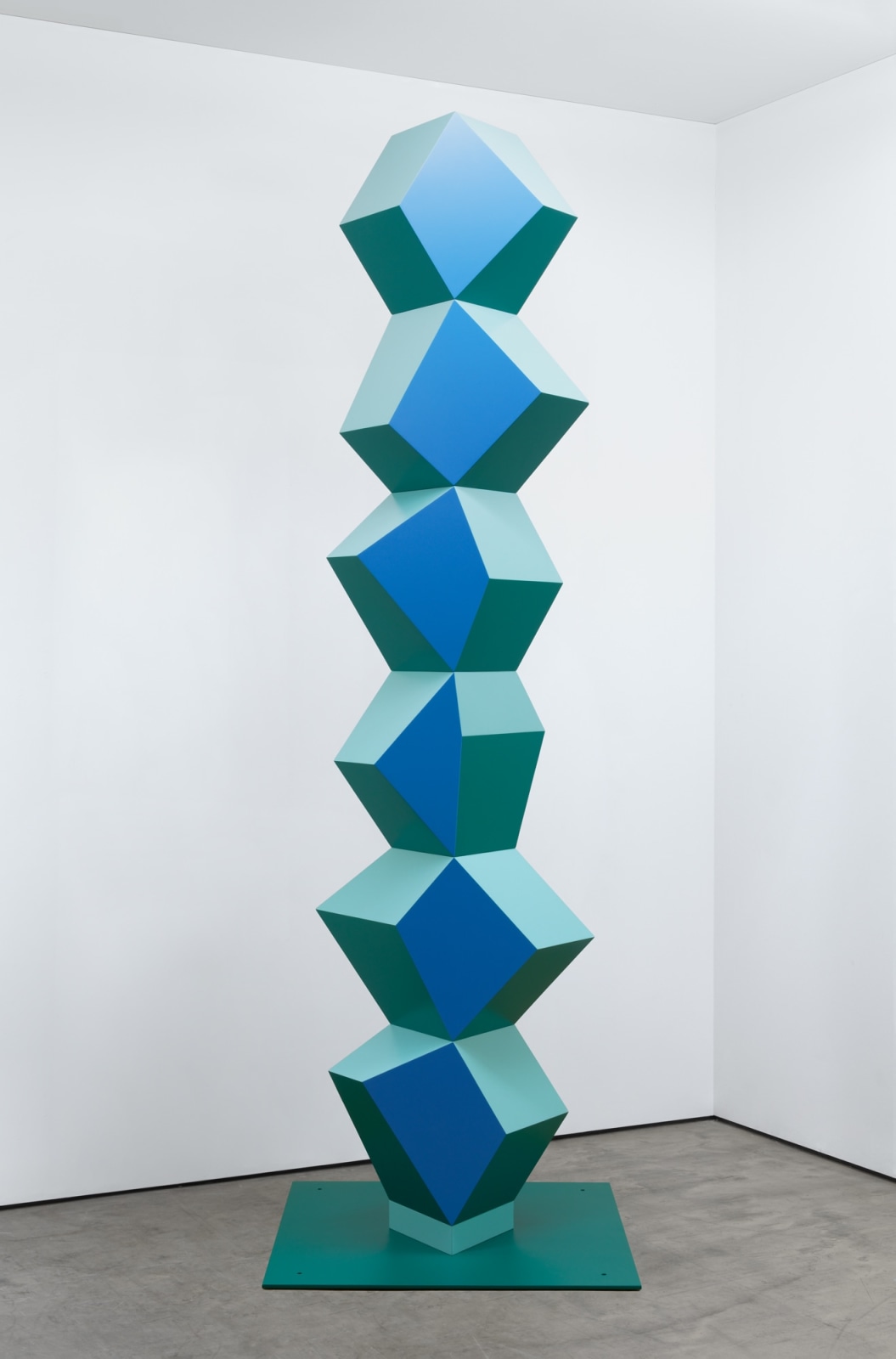
| Angela Bulloch, Heavy Metal Stack of Six: Mint Jade, 2022, powder coated stainless steel, 309 x 80 x 50 cm. Photo © Eberle & Eisfeld
| |
|
Cemile Sahin at Kunsthalle Osnabrück
|
|
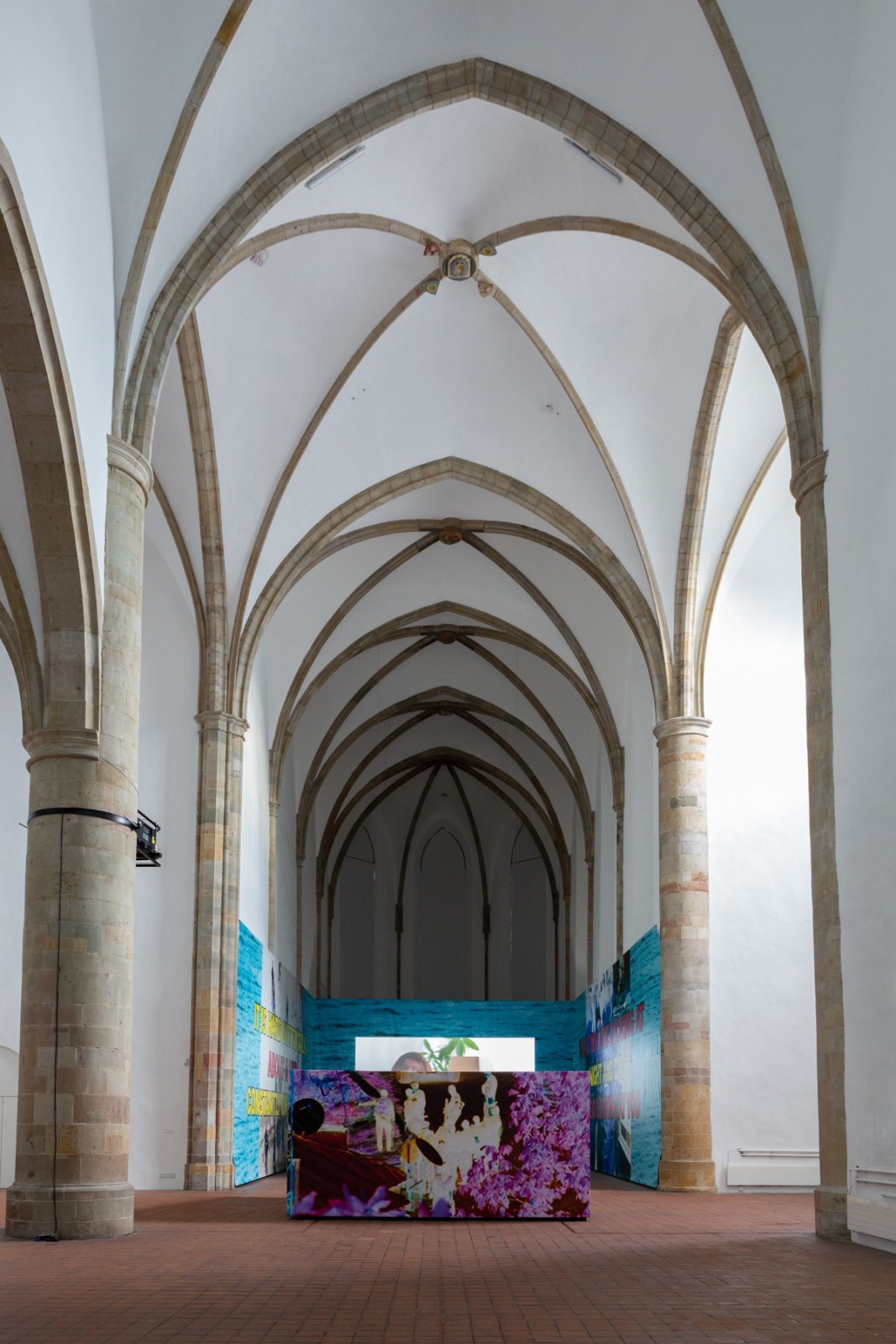
| Projected on wall: Four Ballads for my Father – Spring, 2022, digital video, duration: 43:40 min.
Exhibition view: Cemile Sahin, A Song of Tigris & Euphrates, Kunsthalle Osnabrück, 2022. Photo © Lucie Marsmann | |
|
Cemile Sahin A Song of Tigris & EuphratesKunsthalle Osnabrück Through March 5, 2023 www.kunsthalle.osnabrueck.dePresented at the Kunsthalle Osnabrück as part of a large-scale installation, Cemile Sahin's film Spring is the first of her multi-part project Four Ballads for my Father. A major motif of the entire project is the role of water, in particular the economic and political effects of the GAP dam project in Turkey. For several decades, the Southeastern Anatolia Project, also known as GAP (Turkish: Güneydoğu Anadolu Projesi), has been under construction on the upper reaches of the Euphrates and Tigris rivers in the Kurdish regions of Turkey. Sahin’s film titled Spring, the first part of the ongoing project, addresses the topic through a fictional lens, telling the story of the Kurdish family whose homeland was flooded by a Turkish water dam project and its members displaced between Istanbul, Paris and on the road. We meet the family at a memorial, for whom remains unclear. In one vignette after the other we meet members of the family and learn about their lives—past experiences, large and small struggles in the present, and hopes for the future. We slowly surmise the relationship between the members of the Kurdish family and their connection to a missing husband, friend and father: Hasan.
|
|
|
 | Projected on wall: Four Ballads for my Father – Spring, 2022, digital video, duration: 43:40 min.
Exhibition views: Cemile Sahin, A Song of Tigris & Euphrates, Kunsthalle Osnabrück, 2022. Photos © Lucie Marsmann | |
|
This missing person also constitutes a link to the other narrative strand: two Turkish-speaking businessmen who, as is hinted through their conversations, have something to hide which may or may not have to do with the disappearance. In a narrative twist, that gives the storytelling a structure and adds a savvy self-reflexive level to the film, some of the footage is ostensible being filmed by a French documentary filmmaker investigating the disappearance of Hasan, interviewing the Kurdish family and having contacted the Turkish company which the businessmen represent in France.
Drawing on multiple genres—among them documentary, political thriller, film noir, melodrama, telenovela—the narrative sways between heartfelt action, almost cartoonish villainy, and a kind of naturalistic apathy, but also includes found footage of violent scenes from protests and of military actions. Spring deftly weaves all these narrative strands together while keeping in play a sophisticated film-in-film structure. In several monologues, into the camera, the protagonists seem to be speaking to both the experience of displacement and migration, as well as that of acting. |
|
|
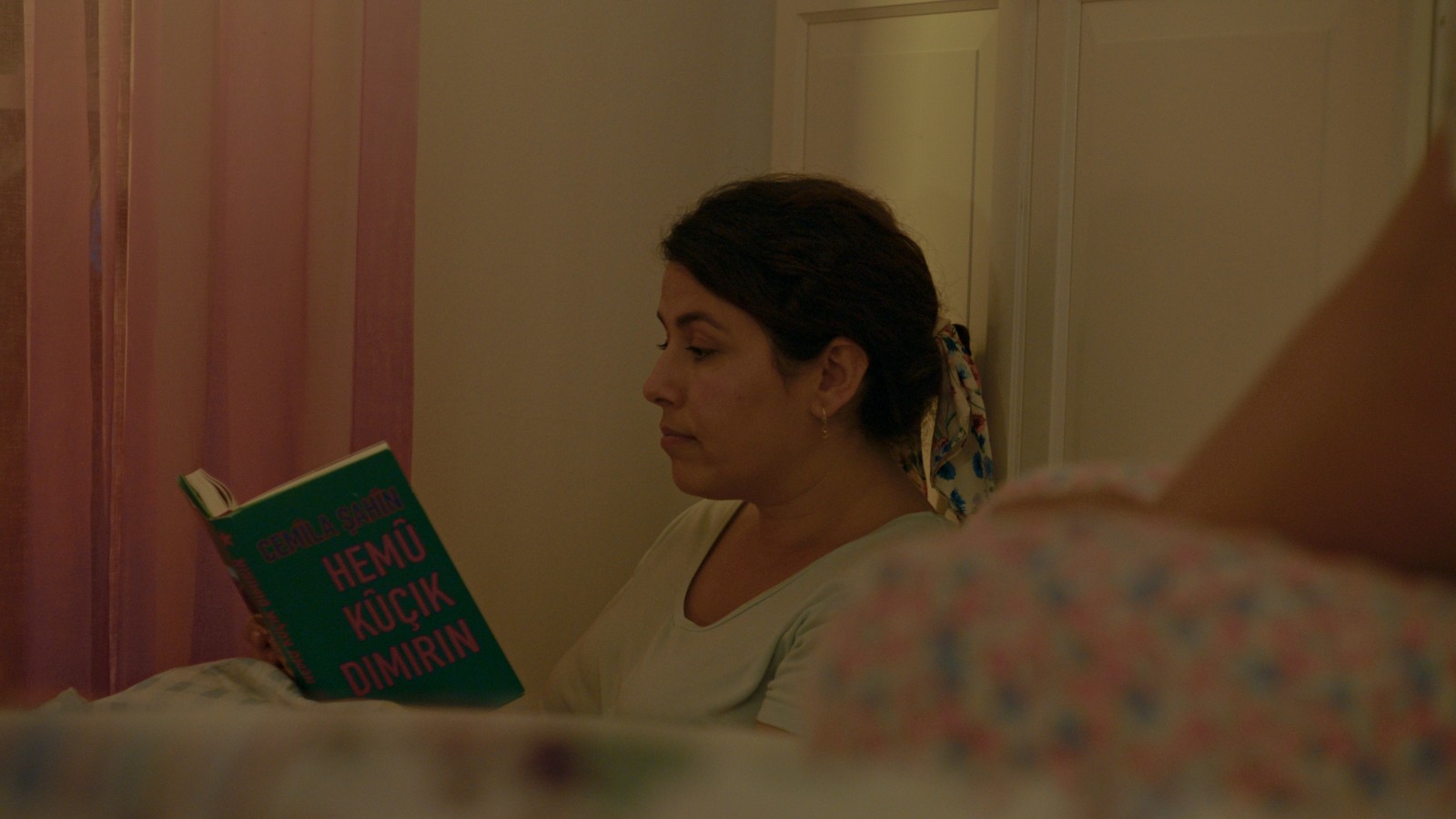 | Cemile Sahin, Four Ballads for my Father – Spring, 2022 (film still), video installation, duration: 43:40 min. © Cemile Sahin
One of the characters is reading a book by Sahin.
| |
|
Sahin's inside jokes—such as a character reading a Kurdish edition of the artist’s book ALLE HUNDE STERBEN (EN: ALL DOGS DIE, but never published in Kurdish) or placing one of her panel works in the office of the French documentary filmmakers—further complicated the differentiation of fact and fiction. “These French," the Turkish businessman says condescendingly when he sees Sahin's It Would Have Taught Me Wisdom, "they have no taste."
Spring concludes with a scene in which the Kurdish family receives devastating news, suggesting a connection between the scene of mourning at the beginning of the film. Yet in a nod to Sahin’s frequent use of episodic storytelling conventions, many questions are left open, perhaps to be resolved in the next parts of Four Ballads for my Father. |
|
|
 | Cemile Sahin, Four Ballads for my Father – Spring, 2022 (film still), video installation, duration: 43:40 min. © Cemile Sahin | |
|
Cemile Sahin at the 16th Lyon Biennale: manifesto of fragility |
|
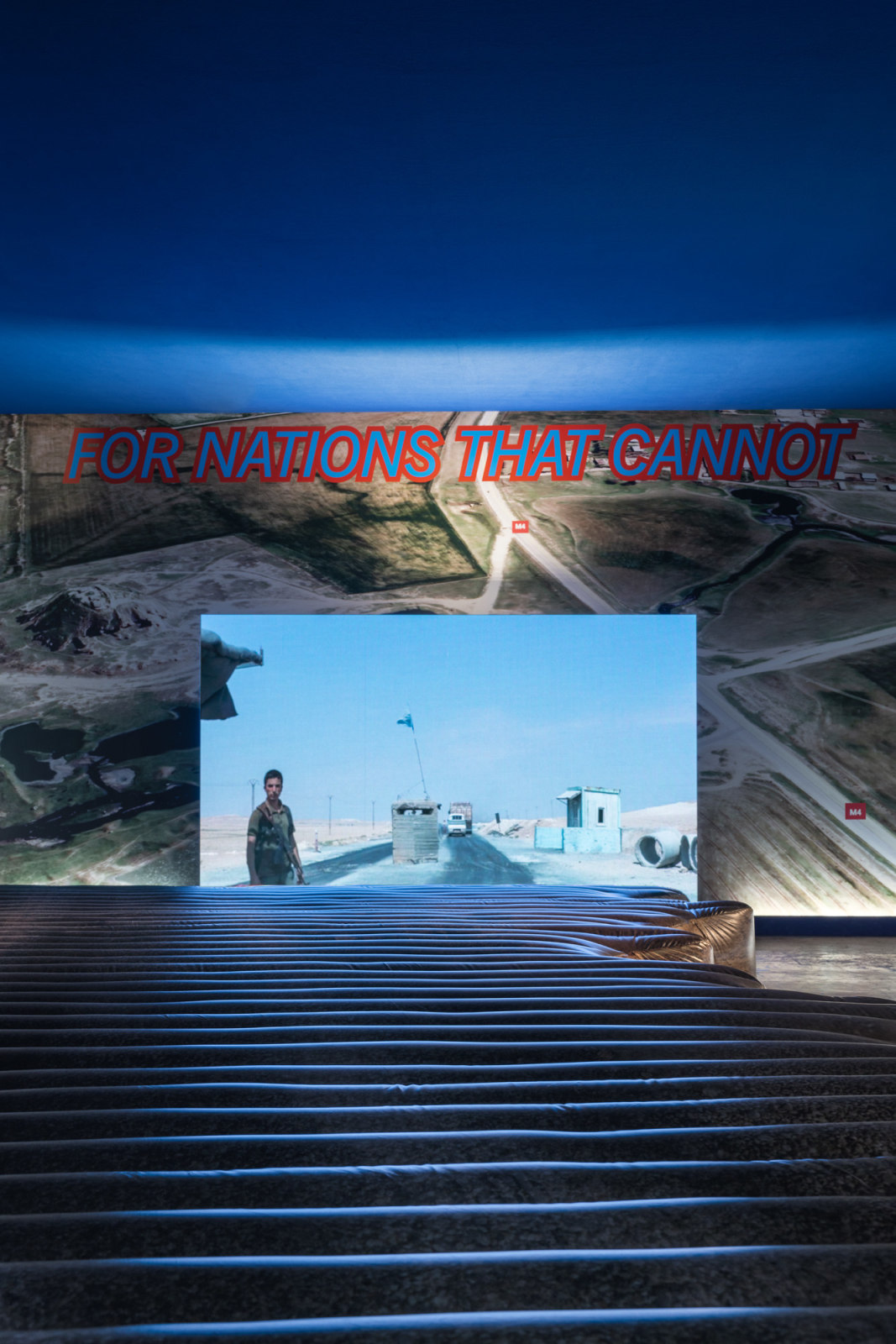
| Cemile Sahin, Drone Valley, 2022, site-specific installation with inflatable checkpoint sculpture, video, sound and wallpaper, dimensions variable. Exhibition view: 16th Lyon Biennale: manifesto of fragility, Lyon, 2022. Photo © Andrea Rossetti | |
|
16th Lyon Biennale: manifesto of fragility With Cemile SahinFagor factories 65 Rue Challemel Lacour69007 Lyon Through December 31, 2022 www.labiennaledelyon.comCurrently on view as part of the 16th Lyon Biennial, Cemile Sahin's 2022 multimedia installation Drone Valley focuses on her ongoing work concerning the 1923 treaty of Lausanne and its impact on the Middle East one hundred years later from another perspective. The point of departure for this work is the third longest wall in the world: the 900km long wall that Turkey built on its border with Syria, ostensibly to protect itself against illegal crossing and smuggling. The inflatable sculpture recalls a part of the border wall and is flanks the video of the M4 motorway, a strategic route partly running along the wall, through which Turkey plans to fortify its borders. The wallpaper combines images of the Turkey and Syrian border taken from Google Maps with a short text. The text is taken from a quote from a 1925 speech by the leader of the Turkish National Movement and founder of the Republic of Turkey, Mustafa Kemal Atatürk (1881–1938). It reads in full: “The future is in the sky, for nations that cannot protect their skies can never be sure of their future.” Atatürk delivered the speech when the country joined The World Air Sports Federation (FAI).
|
|
|

| Cemile Sahin, For Nations That Cannot, 2022. UV print on car wrapping foil mounted on clear acrylic glass.
This work is from a series that draws on imagery from Drone Valley, combining it with fragments of the quote by Kemal Atatürk seen on the wall paper of the installation. | |
|
While Atatürk was originally referring to the development of aircraft for military purposes, today, especially within the context of Sahin’s work, his words call to mind the use of unmanned drones by the military, civil authorities and commercial entities. Importantly, The World Air Sports Federation is based in Lausanne, which is currently also a center for the development of drone technology and its trade.
A century after the Lausanne contracts, then, Sahin’s work highlights a new connection that ties the Swiss city to the Middle East: drones and drone software manufactured in Lausanne have been linked to Turkey's patrol system of these vast walls and roads. Connecting aerial, video, sound and sculptural materials from these two massive infrastructure projects, Sahin emphasizes the imposition of ideological realities onto landscapes, as well as the purposeful erasure these ideologies perpetrate. |
|
|
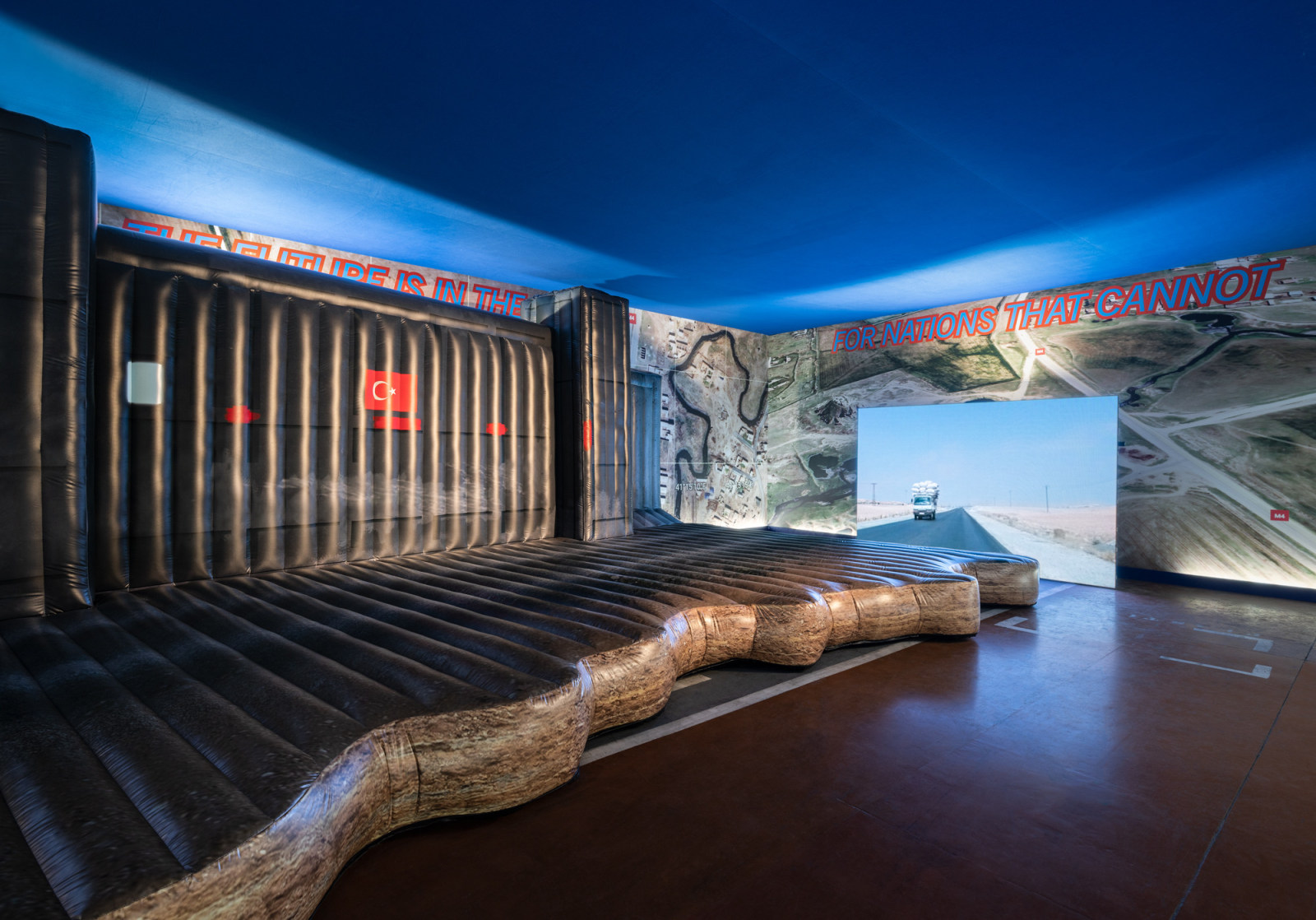
| Cemile Sahin, Drone Valley, 2022, site-specific installation with inflatable checkpoint sculpture, video, sound and wallpaper, dimensions variable. Exhibition view: 16th Lyon Biennale: manifesto of fragility, Lyon, 2022. Photo © Andrea Rossetti.
The installation consists of a video, inflatable sculptural elements and a photo-wallpaper. | |
|
Liam Gillick and the World Weather Network
|
|

| Liam Gillick, A Variability Quantifier (aka The Fogo Island Red Weather Station), Fogo Island, 2022. Photo © Joshua Jensen | |
|
Liam Gillick's Weather Station on Fogo Island has been up and running for several weeks now, transmitting data. We want to draw your attention to the larger frame work in which the work was commissioned, namely the World Weather Network.
Formed in response to the climate emergency, the World Weather Network is a constellation of weather stations set up by 28 arts agencies around the world and an invitation to look, listen, learn, and act.
From June 21 2022 to June 21 2023, artists, writers and communities will share observations, stories, reflections and images about their local weather, creating an archipelago of voices and viewpoints. Engaging climate scientists and environmentalists, the World Weather Network brings together diverse world views and different ways of understanding the weather across multiple localities and languages.
Weather Stations
Each partner arts agency has chosen a location of significance from where artists and writers can explore the local weather; called “weather stations”. They may be specific places, buildings, environments or wider geographic regions. From each weather station, artists and writers create new works in a range of different art forms: these are the “weather reports”.
The website of the World Weather Network has a wealth of information about these projects all over the world: among them historical images, photo essays, contemporary sites and observations, images and texts about weather, climate, ecology, architecture, films, sound works, readings, events, conferences and of course the data from the weather stations some in the form of memoirs, art projects, anthropological research projects. |
|
|
Liam Gillick's A VARIABILITY QUANTIFIER
A Variability Quantifier (aka The Fogo Island Red Weather Station) is an artwork intended to function as an operational weather station on Fogo Island. It gathers local weather data and is a place for education, reflection, and discussion. The site and work are open for people to visit and use.
Data produced by the weather station will be made available to the communities living on Fogo Island, as well as to artistic and scientific communities internationally, serving as source material for creative interpretations and investigations into this weatherbound part of the world. Reports made with this data will be published via World Weather Network over the year.
With advice from partners in the local community, Liam Gillick developed his concept for a 2/3 scale model of a typical fishing stage structure, commonly found on Fogo Island. The structure is a framework for scientists and local community members to add meteorological instruments that are helpful in measuring and tracking local weather. Crucially, it helps to monitor changes connected to an increasing experience of the climate crisis. Fogo Island has a front row seat on the Labrador Current for observing changes to events such as the annual passage of icebergs in ‘Iceberg Alley’.
|
|
|
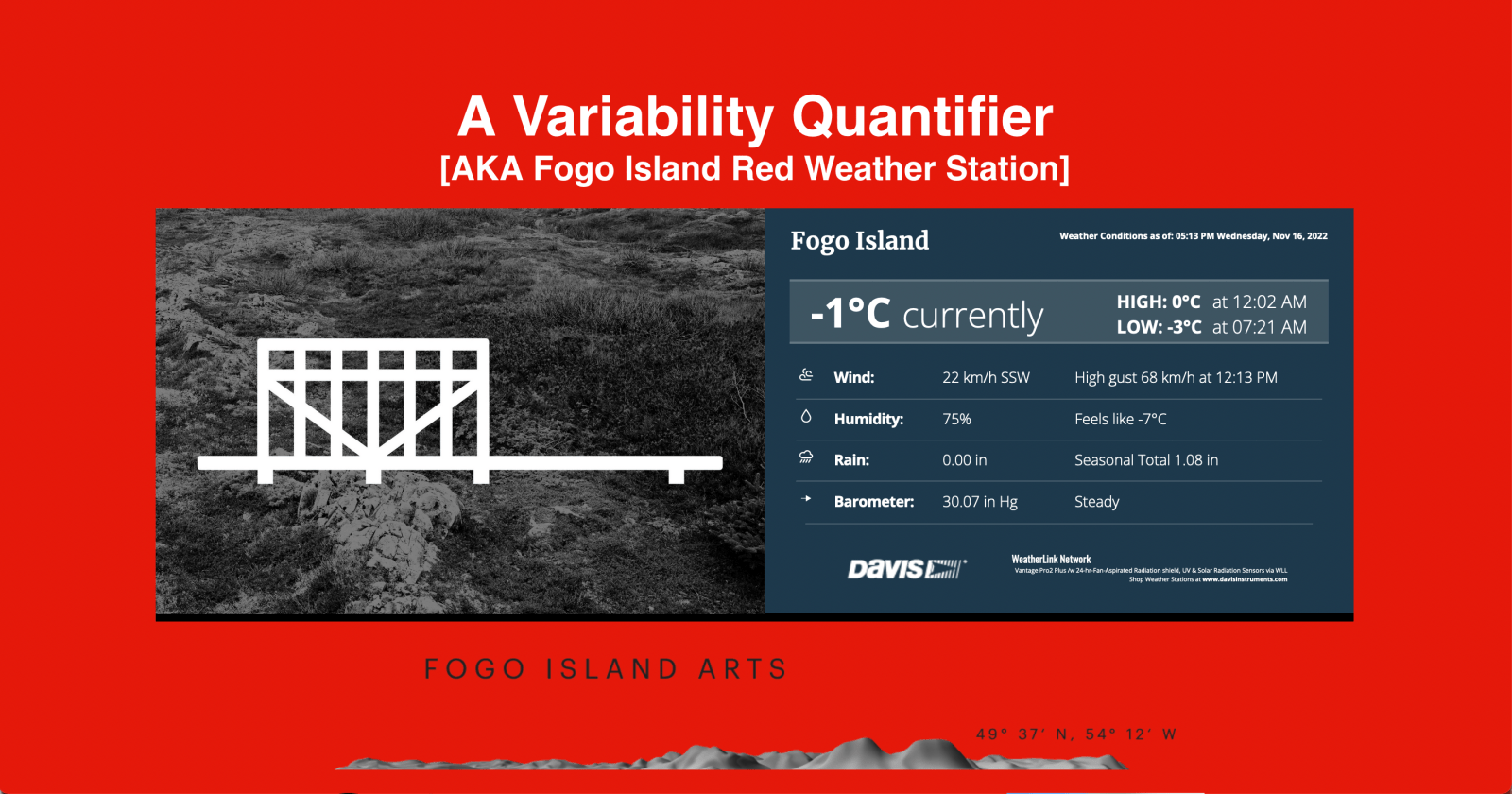
| Click the image to visit the online data portal and view the information from Gillick's Fogo Island weather station.
| |
|
Liam Gillick’s project for Fogo Island develops his interest in the origins of understanding climate science that has been present in several of his works. In recent years he has made specific reference to the work of the eminent Japanese-American climatologist Syukuro Manabe. Manabe, along with his colleagues, developed refined mathematical tools to model the atmosphere in the mid-1960s.
The structure is maintained as a site for measurement and experimentation. The base-level operation is a remote autonomous weather station gathering local climate data and sharing it online. The site is also used as a lab for the introduction of new monitoring and measuring equipment and specific targeted experimentation as the project develops and local needs or desires to gather additional information emerge. It also functions as a site for school visits to further the understanding of the role that scientific modelling and data gathering play in relation to climate. The structure is RAL 3020 red, a color Gillick often uses to indicate a role poised between a functional framework and an artwork, integrated yet separate from its surroundings.
A Variability Quantifier (aka The Fogo Island Red Weather Station), 2022 is being acquired by the National Gallery of Canada as part of its National Outreach initiative in which artworks from the collection are sited and maintained at localities across the country. The work will be displayed on Fogo Island through October 2026. |
|
|

| Liam Gillick, A Variability Quantifier (aka The Fogo Island Red Weather Station), Fogo Island, 2022. Photo © Joshua Jensen | |
|
The London Review of Books is collaborating with the World Weather Network. Since July every other Friday a new report from an LRB contributor about one of the WWN locations has published on the LRB blog, alongside artwork generated by the network. Continuing through next summer, artists and writers will share observations, stories, reflections and images responding to their local weather and the effects of the climate emergency. Read all the dispatches published so far HERE or by clicking the image below.
|
|
|
Christopher Roth and Jeanne Tremsal
|
|
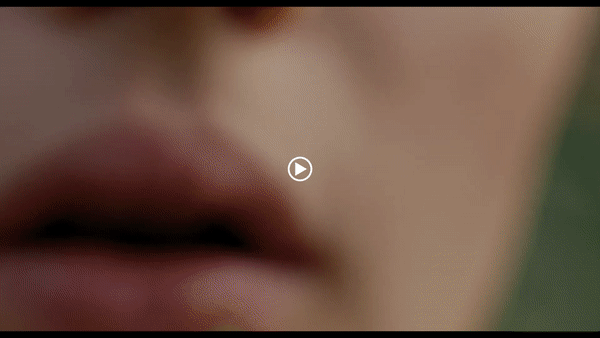
| Watch the trailer for Servus Papa, See You in Hell here
| |
|
Servus Papa, See You in HellA film by Christopher Roth and Jeanne Tremsal General theatrical release in Germany November 24, 2022 Further information on the filmWatch the trailer hereThe feature-length film Servus Papa, See you in Hell tells the story of Jeanne, who has lived in the commune on the farm since she was two years old. Her parents live in city communes and rarely visit – just one of the commune’s rules installed by Otto, the ruler of the commune: Children grow up without parents. 14-year-old Jeanne knows no other world, she enjoys her life surrounded by many other children in the great outdoors – until she falls in love with 16-year-old Jean and her childhood paradise starts to crack. Ultimately, she violates Otto’s supreme law: “Sex is allowed, but love is forbidden.” Below is a list of special screenings at which Christopher Roth, Clemens Schick and Jeanne Tremsal will be present. The general theatrical release in German cinemas starts November 24, 2022. Reviews"Roth’s lightly fictionalized drama is an engrossing study in mass gaslighting and twisted political radicalism, couching some very dark material in a deceptively sunny and lyrical package… this warning from history feels more current and universal than most period pieces, gaining extra timely traction in the post 'Me Too' era, with toxic masculinity under much deeper scrutiny." – Stephen Dalton, The Verdict (EN)
"Visually impressive with some striking scenes." – Allan Hunter, Screendaily (EN)"Sie legen die Mechanismen offen, die Menschen wider besseres Wissen dazu bringen, wegzuschauen, wenn Verbrechen geschehen." – Peter Gutting, Film-Rezensionen (DE)"So funktioniert der Film durchaus als Lehrstück über Macht und Machtmissbrauch im Namen der Freiheit." – Frank Arnold, EDP Film (DE)
|
|
|
Upcoming screening dates (with Christopher Roth, Clemens Schick and Jeanne Tremsal present)
November 21, 9.15pm Tallinn Black Nights Film Festival (with Q&A)
November 22, 8.15pm Tallinn Black Nights Film Festival
November 23, 7.30pm Tallinn Black Nights Film Festival
November 24, 7.00pm Berlin Cinema tour (Moviemento)
November 25, 8.30pm Kinofest Lünen (with Q&A)
November 26, 3.30pm Kinofest Lünen
November 26, 8.00pm Münster Cinema tour (Cinema)
November 27, 8.00pm Köln Cinema tour (Cinenova)
November 28, 8.00pm München Cinema tour (City Kino)
November 29, 8.00pm Kassel Cinema tour (Bali)
Servus Papa, See You in Hell
Director: Christopher Roth
Writers: Jeanne Tremsal, Christopher Roth
Cast: Jana McKinnon, Clemens Schick, Leo Altaras, Dirk von Lowtzow, and more.
Production: Arden Film
Distribution Germany: Port au Prince Pictures
Language: German (English Subtitles) |
|
|

| Film still: Servus Papa, See You in Hell, 2022, directed by Christopher Roth. Still © Arden Film
| |
|
Dominique Gonzalez-Foerster
Volcanic Excursion. A Vision
Publisher: Secession
2021
Language: English
Available here
|
|
Dominique Gonzalez-Foerster
1887 – 2058
Publisher: Prestel Publishing
2016
Language: English
Available here
|
|
Paul B. Preciado
Can the Monster Speak?
2021
Publisher: Fitzcarraldo Editions
Language: English
Available here
|
|
Paul B. Preciado
An Apartment on Uranus
2020
Publisher: Fitzcarraldo Editions
Language: English
Available here
|
|
Paul B. Preciado
Ein Apartment auf dem Uranus
2020
Publisher: Suhrkamp Verlag
Language: German
Available here
|
|
Cemile Sahin
ALLE HUNDE STERBEN
2020
Publisher: Aufbau Verlag
Language: German
Available here
|
|
Liam Gillick
Half a Complex
2019
Publisher: Hatje Cantz
Language: English
Available here
|
|
Liam Gillick
'A Max De Vos'
2022
Publisher: Borgerhoff & Lamberigts
Language: English
Available here
|
|
|
ESTHER SCHIPPER
POTSDAMER STRASSE 81E
10785 BERLIN
|
|
|
|
|
